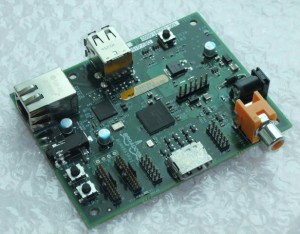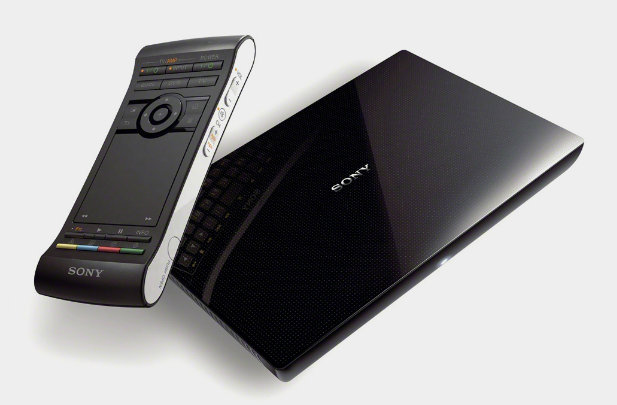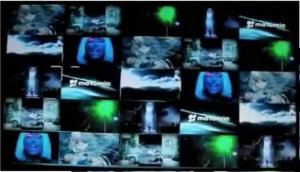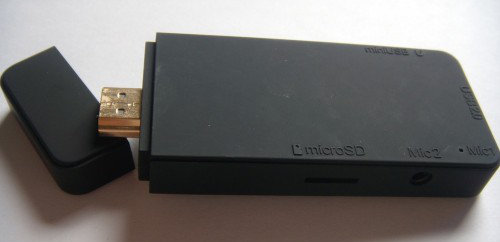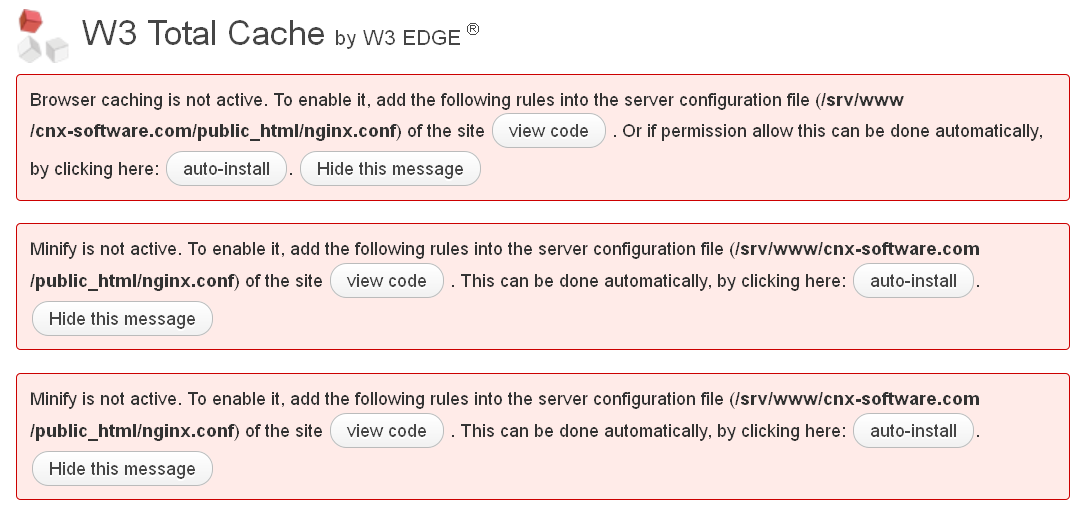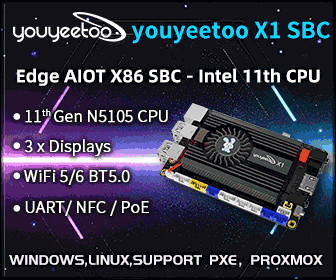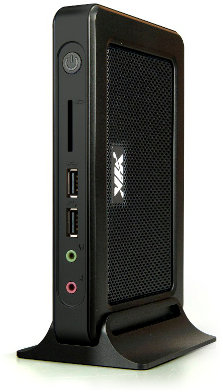Dmitry (omgfire), one of my awesome readers, compiled a great tabular list of Linux friendly boards and products that sells for less than $300 US (usually less than $200). This list includes technical details such as the processor, GPU, memory, NAND flash, connectivity, ports, supported Linux distributions… as well as availability and pricing information. There are currently 39 Linux devices in total. The vast majority are ARM based boards, but he also included 2 x86 products by VIA, but those are relatively pricey ($265 and up). Here’s a summary list with SoCs used, links to blog posts and product pages (if available), as well as price information. Raspberry Pi Model B – Broadcom BCM2835 (ARM11) – Blog post (That’s my first post about the R-Pi last year, and the board is much different now) – Product page – Price: $35 + shipping Rikomagic MK802 – Allwiner A10 (Cortex A8) – […]
Sony NSZ-GS7, The 1st Google TV 2.0 Device is Now Available in the US and UK
Google announced that the 1st Google TV 2.0 device is now available for pre-order in the US and in UK for $199.99. Sony NSZ-GS7 is a set-top box based on Marvell GTV reference design, which comes with a dual-sided “magic” Bluetooth remote (NSG-MR5U). The device was first seen at CES 2012. Here are the key specifications of this media player: SoC – Marvell Armada 1500 dual core ARM processor @ 1.2 GHz with Vivante GC1000 GPU Storage – 8GB Nand Flash Connectivity: Built-in Wifi 802.11 b/g/n 100Mbit Ethernet Built-in Bluetooth Video Output – HDMI Audio Output – Optical out. HDMI supports Dolby and LPCM audio output Video codecs – H264-AVC, MPEG4-SP/-AAC/-HE, MPEG-1/2, MPEG4, H.263, WMV, Vorbis, Xvid… Video containers – 3gp/3g2/3gp9, AVI, FLV, MKV, MOV, MPEG TS/PS, mp4/m4a, MVC, ogg, wmv/asf… Picture formats – bmp, gif, jpeg, mpo and png Audio formats – AAC, AC3, LPCM/WAV, MDI, MP3 and WMA […]
Motomic Butterfly Media Grid Renders Pictures and Videos on Freescale Kinetis K70 Cortex-M4 MCU
Motomic has officially announced Butterfly Media Grid, the first media player for Cortex M4 micro-controllers. The software currently runs on Freescale MQX Real-Time Operating System, and can display pictures and logos, as well as play videos on micro-controllers such as the Freescale Kinetis K70 MCU. Here are Media Grid key features: Display images, logos and videos Configure from full screen to grids up to 10×10 Rotate content Configure to optimize performance Display at resolutions up to HD Update over a network. Media Grid is available as a standalone application, and an SDK is also provided in order to embed the technology in custom applications using C, C++ or Qt interfaces. Since the media can be updated over the network, Media Grid is actually similar to a simple digital signage player for low end hardware. Motomic showcased the Media Grid at Design West, in March 2012, and only recently uploaded a […]
Monkey, an Open Source High Performance Embedded Web Server
Some time ago, I mentioned 5 web servers (mathopd, thttpd, busybox httpd, boa and lighttpd) suitable for embedded systems (including those featuring no MMU processors) and low end machines. I’ve recently come across Monkey web server, a lightweight open source Web Server for Linux (2.6.29 or greater), which has been designed with focus in embedded devices. Monkey is currently supported on ARM, x86 and x64, although a quick analysis of the source code shows it forks, so it won’t be supported on processors that do not feature a memory management unit (MMU) without modifications. Monkey supports the following features: HTTP/1.1 compliant Virtual Hosts Asynchronous networking model (event-driven) Indented configuration Plugins Support C API Interface Other features through base plugins: SSL Security Log writter Directory Listing Shell: Command line The developers have benchmarked Monkey against busybox httpd and nginx on a now well-know ARMv6 platform: the Raspberry Pi. They used Siege […]
Oval Elephant Android / Linaro mini PC HDMI Stick
Since Rikomagic MK802 and Zero Device Z802 mini PCs have gone viral and started the Android mini PC craze, this type of device has been popping a bit everywhere… The latest interesting device I found is Oval Elephant Mini PC based on AllWinner A10 processor with 1 GB RAM and selling for 71.49 USD. They have appears to have a whooping 11 in stocks now to be shipped on the 3rd of July, but they are also taking pre-orders and if there is enough demand (over 1,000 pieces), the price would go down to 68 USD. The device pictured above is just a prototype, and they have decided to replace the HDMI mini male output by a proper HDMI output (probably male). As I said before I prefer this form factor, especially since you can just connect mini BlueTooth dongles (no sure that one works with Android / Linux though) to […]
Migrating a WordPress Blog from Apache2 to Nginx
This blog is hosted on a Linode VPS with 512 MB RAM and running Ubuntu 11.10. Up until today, Apache2 was the web server, and it worked fine except sometimes, it reached connection and memory limits, and the blog would go offline for a short period of time, especially right after a new blog post. So this week-end, I decided to switch to nginx (pronounced engine-x) web server which is said to use less memory than Apache2. Let me know if something suddenly stopped working… nginx is a relatively recent web server, and the documentation on the web seems to become outdated pretty fast, so I’ve decided to document what I’ve done. The first thing I would recommend is to try it in your own local server first, and make sure most things are working including plugins. Testing your WordPress blog with nginx in a local server I run Ubuntu […]
Ubuntu 12.04 Server ARMHF Image for Mele A1000/A2000
I’ve seen quite a few people who want to use the Mele A1000 – or its brother the Mele A2000 – media player as a server (Sacrilege!). Since recent ARM servers are running Ubuntu 12.04, and Tom Gall has (conveniently) posted the live-build config necessary to generate Ubuntu 12.04 Server image this week, I thought I’d give it a try on Mele A1000. The image generated is a headless system running Apache 2 and sshd (openssh_server). I’ll detail the steps I followed to generate this image first, so if you just want to try the SD card image, scroll down at the end of the post. The first step is to generate Ubuntu Linaro Server rootfs, by following the Live-Build instructions on Linaro website together with Tom’s live build config. I’ve followed those steps in a machine running Ubuntu 12.04. Let’s install the required packages:
|
1 2 3 |
sudo add-apt-repository ppa:linaro-maintainers/tools sudo apt-get update sudo apt-get install live-build multistrap qemu-user-static git p7zip-full |
Configure the build and […]
VIA Announces ARM Cortex A9 Based Digital Signage System
VIA has unveiled its ARM Digital Signage (DS) system for cost sensitive high volume digital signage deployments. The system is based on an unnamed Cortex A9 processor (possibly Wondermedia WM8850?) with up to 2 GB RAM and 64 GB Flash. The company expects the device to be used in a wide range of applications such as kiosks, POS systems, video walls, menu boards to TVOIP, cloud streaming, and Out of Home Advertising. Here are the specs of this digital signage player: All in one system-ready to load software Designed for Android operating system Industry standard ARM Cortex A9 SoC Hardware acceleration of the most demanding video formats for resolutions up to 1080p DVI-D display port (HDMI Optional) 4x USB 2.0 ports 10/100 Ethernet port Audio-out/ Mic-in Up to 64GB NAND Flash Up to 2GB DDR3 SDRAM Dimension – 18 cm x 12 cm x 2.5 cm The VIA ARM DS […]


